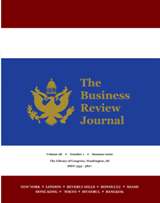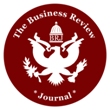|
Is Time-Varying Conditional Beta A Significant Risk Measurement?
Dr. David Morelli, Kent
Business School, University of Kent, Canterbury, Kent, UK
ABSTRACT
This paper finds evidence
of a significant risk-return relationship on the Hong Kong stock market when
beta is used as the measurement of risk. Beta is estimated from time-varying
variances and covariances estimated using variants of GARCH models. Beta is
then examined conditionally on the sign of the excess market returns. The
results show beta to be a significant risk measurement when recognition is given
to the sign of the excess market return. A strong positive risk-return
relationship is found during up markets and a strong negative relationship
during down markets. When the sign of the excess market return is ignored beta
is shown to be an insignificant risk measurement on the Hong Kong stock market.
Explaining what causes movements in stock prices has always been of great
interest in the finance world. Over the years many pricing models have been
developed both single and multifactor in an attempt to answer this. The most
well known pricing model, which is still discussed and empirically tested today,
is the Capital Asset Pricing Model (CAPM) of Sharpe (1964) and Lintner (1965).
This single factor asset pricing model attempts to explain security returns
through its relationship with its systematic risk. The CAPM assumes a positive,
linear risk-return relationship. The only risk measure of any significance is
systematic risk as the model assumes that idiosyncratic risk is diversified away
through the holding of the market portfolio. Despite early empirical studies
supporting this positive risk-return relationship, such as those by; Lintner
(1965), Black et al. (1972) and Fama and MacBeth (1973), a number of subsequent
studies failed to find any such relationship. Such studies include those of
Fama and French (1992) on the US markets, Chan and Chui (1996), Fletcher (1997),
Hung et al. (2004) on the UK market, Ho et al. (2006) on the Hong Kong market,
Faff (2001) on Australian market, and Elsas et al. (2003) on the German stock
market. As a result of many of these studies many doubts were raised regarding
the validity of the CAPM. One of the issues with the
CAPM is the problems associated with its testing. To test the CAPM one requires
the true market portfolio and also expected returns data. With respect to the
true market portfolio a proxy is used.
Full
text
*
Earnings and Corporate
Investment
Dr. Chih-Chieh (Jason)
Chiu, Rider University, Lawrenceville, NJ
Dr. Mitchell Ratner, Rider
University, Lawrenceville, NJ
ABSTRACT
In this paper I examine the
association of corporate investment with earnings. My findings suggest that
earnings are more informative about corporate investment than are cash flows and
normal accruals are more informative about corporate investment than are
discretionary accruals. Further, my analysis shows that cash flows subsume
discretionary accruals in explaining corporate investment. In a world without
financing frictions, corporate earnings and cash flows should explain corporate
investment decisions equally well. This is because in a frictionless financial
market, the information contents of the earnings and cash flows are the same.
However, in a world with financing frictions, created by the separation of
ownership and control, the relationship between earnings and cash flows in
explaining corporate investment decisions is not so obvious. One may argue that
earnings are a lesser measure of firm performance and cannot explain corporate
investments as well as can cash flows. This is because earnings are susceptible
to earnings management. Earnings consist of two components: cash flows and
accruals. Managers could manage earnings via cash flows or accrual manipulation.
In the case of accrual manipulation, managers manage earnings upwards or
downwards by changing the accrual assumptions without changing the underlying
economics of the firm. The manipulated earnings hide a firm’s underlying
economic conditions from its stakeholders and hence are less informative about
the managerial decision making processes. Yet one may also argue that earnings
are a superior performance measure and therefore explain corporate investments
better than do cash flows. According to accounting research, earnings are the
premier measure of firm performances. Dechow (1994) documents that earnings are
a better performance measure than cash flows because the accrual component of
earnings helps mitigate the timing and matching problems with revenues and
expenses.
Full text
*
A Comparison of the
Service Quality of
Operate-Transfer
Swimming Pools
Dr. Cheng-Ping Li, Minghsin
University of Science and Technology, Taiwan R.O.C.
ABSTRACT
The main purpose of this study is to compare the different
types of service quality regarding the outsourcing of
swimming pools in Taipei City. With the questionnaire methodology, 451
users of two swimming pools are recruited as participants. The data is analyzed
by descriptive statistics, t-testing, and one-way ANOVA to test the assumptions.
The main findings are as follows: Most of the subjects of this study are males;
distribution of all ages is average; most education backgrounds are college and
above. Subjects share the highest agreement in “assurance” and “tangibility” of
outsourced swimming pools in this study. Significant differences exist in age,
education background, and monthly income of subjects. People aged over 41 have
higher agreement in the five dimensions of service quality than subjects aged
between 31 and 40 and under 30. Regarding education background, the factors of
subjects holding master’s degrees or above are obviously higher than those
holding bachelor’s degrees or vocational school diplomas. Regarding
“tangibility”, “reliability”, and “empathy”, subjects holding master’s degrees
or above are higher than those holding high school diplomas. Finally, subjects
with monthly income of over 50,001 NTD have higher agreement in “reliability”,
“responsiveness”, “assurance”, and “empathy”. Regarding the
differences of service quality of outsourced swimming pools of different modes,
government-outsourced swimming pools have higher service quality than
school-outsourced swimming pools in “tangibility” and “empathy”. In recent
years, the government has built swimming pools, swimming facilities, and sports
center in schools of all levels, and privately operated swimming pools have
gradually increased (Hsu, 2002). However, due to a lack of human resources and
funding, as well as increased external competition, school-built swimming pools
face difficulties in operation. Therefore, government-built swimming pools are
mostly outsourced to relieve economic burden (Wang, 2001). Under the
circumstances of poor government finance and a lack of school funds, the
government encourages individuals to participate in outsourcing the businesses
of BOT (Building-Operate-Transfer) and OT (Operate and Transfer) swimming pools,
thus, outsourced swimming pools will be the trend in the future (Liu, 2005).
Full text
*
The Difference between
Consumer Needs and Wants: Based on the Store Proximity between Haagen-Dazs and
Starbucks
Dongxiao Wang, East China
Normal University, Shanghai, China
Dr. Hung-hsin Chen, East
China Normal University, Shanghai, China
ABSTRACT
The purpose of this paper
is to investigate the differences between customer needs and wants of Starbucks
and Haagen-Dazs to take the real needs of consumers as a starting point, and
discuss the feasibility of the methods and ways to short the gaps between the
actual needs or wants of the customers and the stores’ behavior in the end.
After the survey from 4 stores of Starbucks and 4 stores of Haagen-Dazs in
Shanghai, we found the differences between customer needs and wants of Starbucks
and Haagen-Dazs. This paper suggests that it can make most customers enjoy more
with the needs of their own services, and improve the competitiveness of these
brands. This study draws on the consumed perspective to investigate consumer
real needs and wants with the differences in contrasting stores. Since Starbucks entered China in 1998, in less
than two decades, it has so far received higher profits in China than in Europe.
Comfortable seats, beautiful music, quiet space, with a cup of Starbucks coffee,
all this things captured hearts and minds of many white-collar workers. While
early in 1996, Haagen-Dazs had come to mainland China firstly. With its high
quality and the perfect Declaration of love, it gradually occupied the high-end
market, and achieved high performance. The dominant flavor of Haagen-Dazs is
sweet and memorable, "Love her, take her to eat Haagen-Dazs," is a lot of
customers ' first impression of Haagen-Dazs. However, insiders of Haagen-Dazs
has talked about such a phenomenon that, where there is a Starbucks, the income
of Haagen-Dazs is not so satisfactory. Not to mention the benefit of a shop is
determined by many factors. The main products of Haagen-Dazs are ice cream,
while Starbucks' main products are coffee. So both of them seems to be
associated difficultly. However, consumer needs sometimes is not an ice cream or
a cup of coffee. So, what are the real consumer needs of Starbucks and
Haagen-Dazs? What are consumer wants of them?
Full text
*
The Effect of Taxes on
Corporate Financing Decisions: Evidence from Brazilian and American Firms
Peter V. Fonseca,
Mackenzie Presbyterian University, Brazil
Dr. Michele N. Juca,
Mackenzie Presbyterian University, Brazil
ABSTRACT
According to trade-off
theory, encouraged by debt tax benefit, the company uses third-party capital to
the level at which the costs, associated with bankruptcy risks, outweigh this
advantage. The United States represents the largest economy in the world and
Brazil is a developing country, with one of the highest tax burdens in the
world. This paper analyzes whether the tax benefit has a positive effect on the
capital structure of American and Brazilian companies. The sample comprises 407
American1 and 217 Brazilian2 non-financial or utility
companies, whose data are obtained between the period of 2008 and 2015. By means
of three tax variables - kink, standardized kink and tax payment - dynamic
adjustment models of capital structure are estimated. The results confirm that
tax benefit influences the capital structure decisions of Brazilian and American
companies. In addition, Brazilian and American companies are identified as
having a conservative position in terms of indebtedness. After their seminal paper of 1958, Modigliani
and Miller (1963) recognize the existence of the effect of tax benefit on debts.
According to them, this tax shield on debt increases the company´s value, since
it reduces its cost of capital. It means that there is an optimal capital
structure allowing the maximization of shareholders´ wealth, which confirms the
traditional theory by Durand (1952). Empirically, companies tend to behave as if
there is an optimal capital structure. According to Weston and Brigham (2000),
the target structure of capital involves the exchange between risk and return.
High risk, associated with high debt, tends to reduce the stock price. However,
higher expected rate of return raises that price. Thus, the company's goal is to
find the optimal capital structure, in which the marginal tax benefits of debt
are equal to its marginal costs. Furthermore, considering the high tax rates
that companies face, the influence of tax shield on the capital structure of
firms is potentially significant. Moreover, since there are considerable
differences between Brazilian and American tax policies, this paper aims at
comparing the effect of debt tax benefits on the capital structure of public
firms in both countries. Based on trade-off theory (TOT), the main hypothesis of
this study is whether there is a positive relationship between the level of
indebtedness and the tax benefit (H1).
Full
text
*
|

 The Business Review
Journal
The Business Review
Journal
.gif)